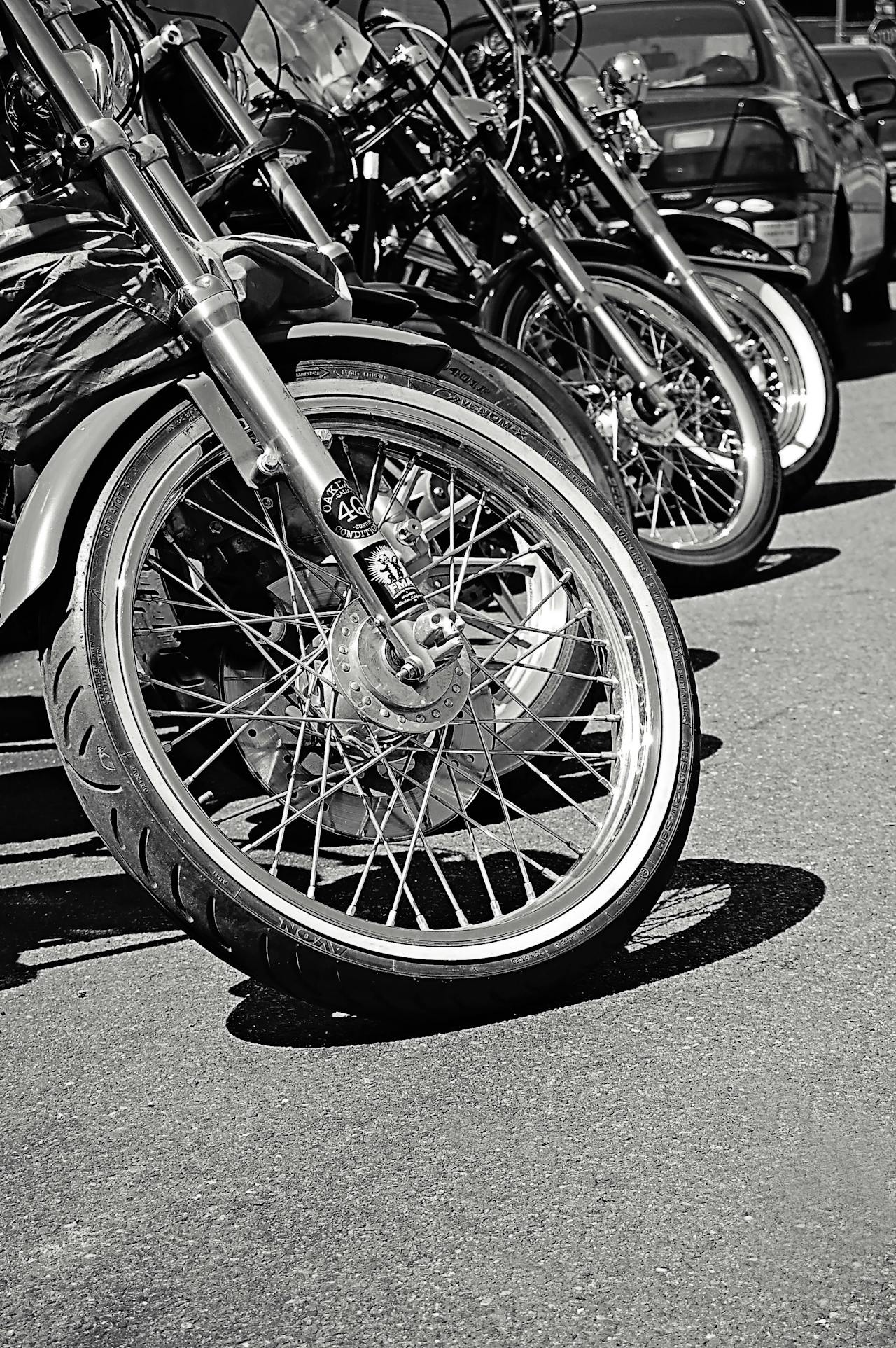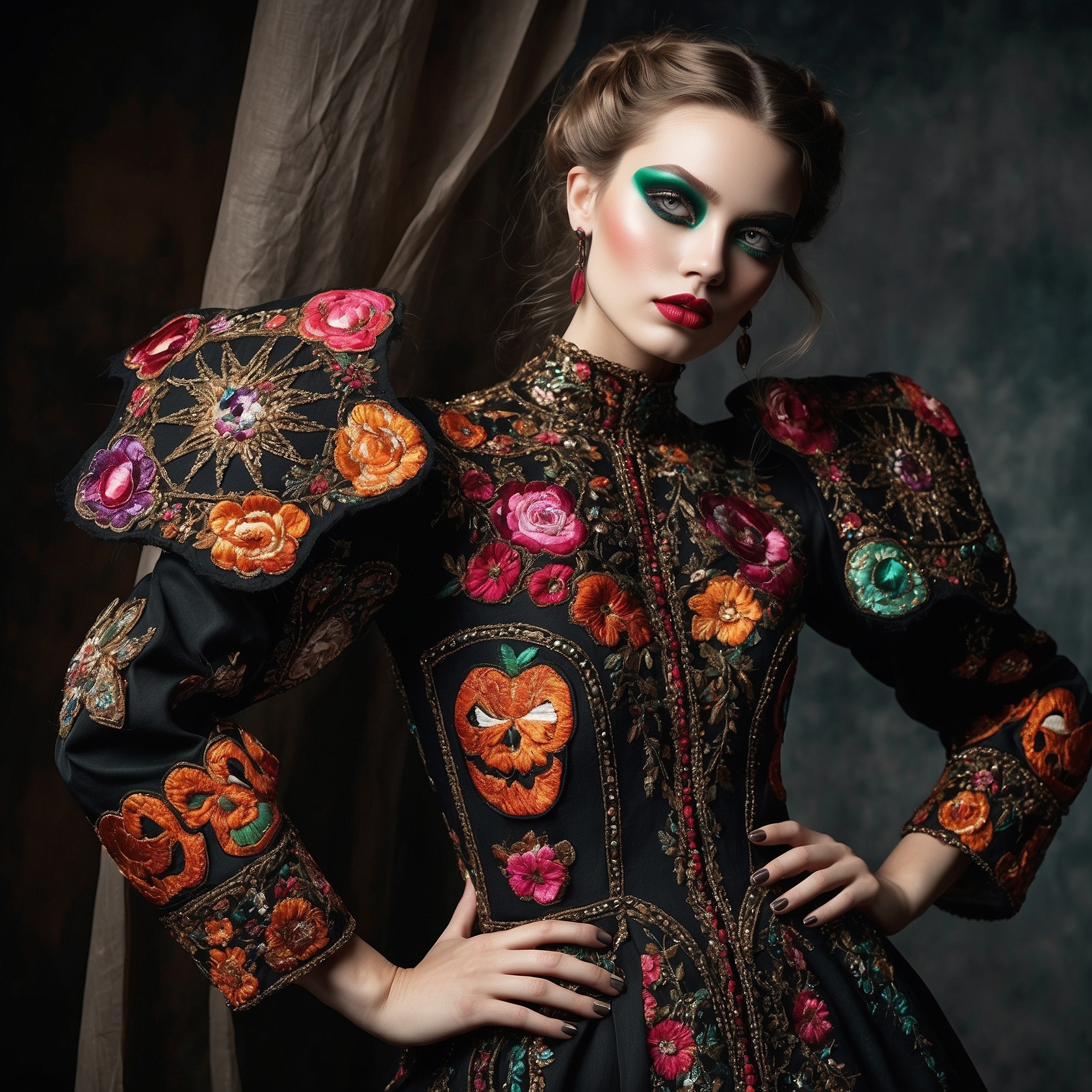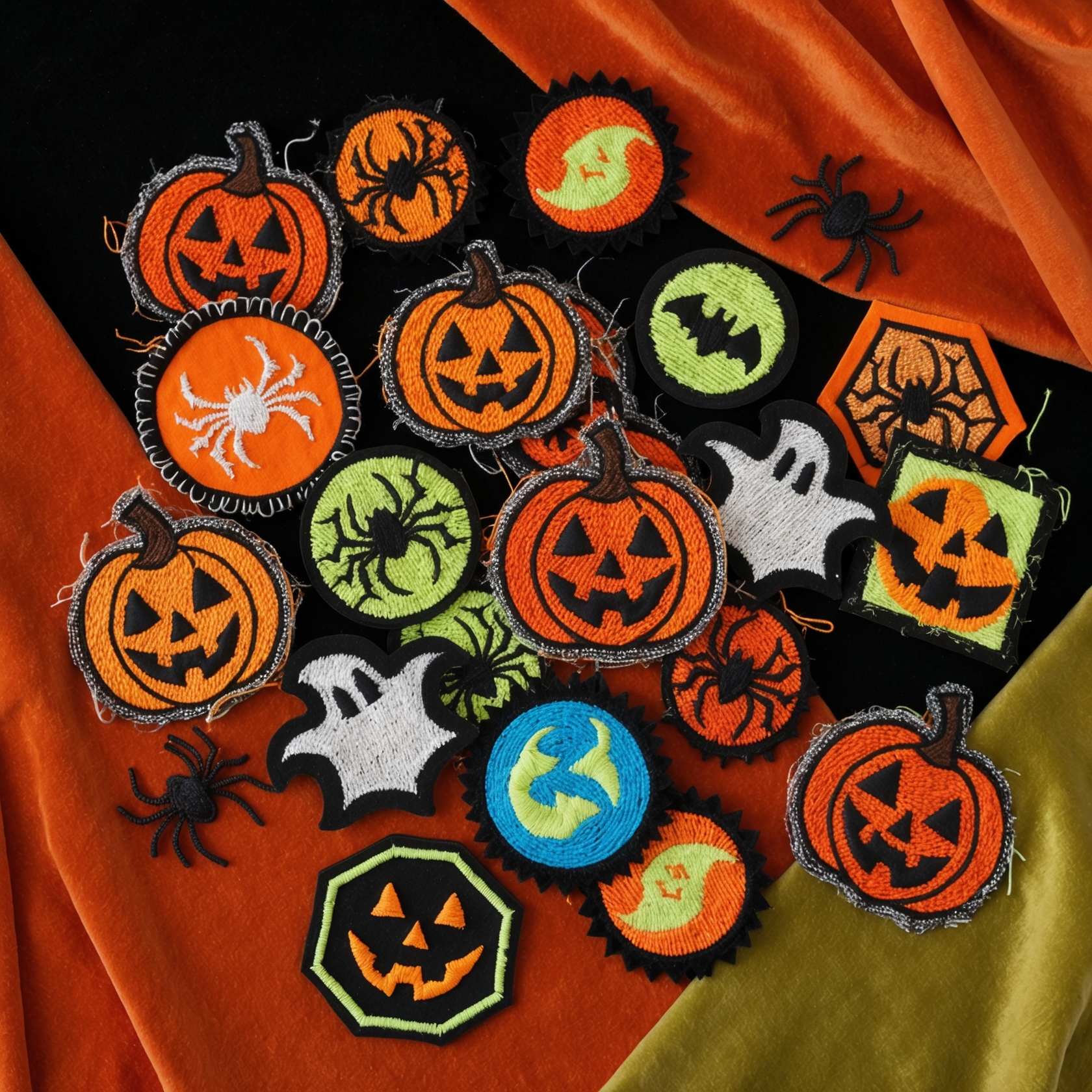The Allure of Biker Patches
Biker patches are more than just decorative elements on a leather vest; they are powerful symbols of identity, rebellion, and community within the biker culture. These patches tell stories of freedom, brotherhood, and the open road, transforming simple pieces of fabric into iconic representations of the biker lifestyle. In this comprehensive guide, we will delve into the history of biker patches, exploring their origins, evolution, and the significance they hold today. By understanding the rich history of biker patches, we can appreciate their transformation from rebel symbols to cultural icons.
1. The Origins of Biker Patches
Early Beginnings
The use of patches in the biker community dates back to the post-World War II era. Returning soldiers, seeking camaraderie and adventure, formed motorcycle clubs that became the foundation of modern biker culture. These early clubs adopted military-inspired patches to signify their affiliation and establish a unique identity.
Example: The Boozefighters Motorcycle Club, founded in 1946, is one of the earliest examples of a motorcycle club using patches. Their distinctive patch featured a skull and crossbones, setting the stage for the rebellious imagery that would become synonymous with biker patches.
Influence of Military Insignia
The design and use of biker patches were heavily influenced by military insignia. Many early bikers were veterans who brought the tradition of wearing patches to signify rank and unit, adapting this practice to their new civilian biker clubs.
Example: The Hells Angels Motorcycle Club, established in 1948, adopted a patch featuring a winged death’s head, reflecting the military background of its founders and their desire to create a strong, cohesive identity.
2. The Evolution of Biker Patches
1950s and 1960s: The Rise of Outlaw Motorcycle Clubs
The 1950s and 1960s saw the rise of outlaw motorcycle clubs (OMCs), which adopted more elaborate and provocative patches. These patches often featured bold imagery and slogans that emphasized the rebellious and anti-establishment ethos of the clubs.
Example: The Outlaws Motorcycle Club, founded in 1935 but gaining notoriety in the 1950s, used a distinctive patch with a crossed pistons and skull, symbolizing their rebellious nature and mechanical prowess.
1970s and 1980s: Cultural Mainstreaming
During the 1970s and 1980s, biker culture began to enter the mainstream, influenced by popular films, music, and media. This period saw an increase in the variety and complexity of biker patches, reflecting a broader range of identities and affiliations within the biker community.
Example: The movie “Easy Rider” (1969) popularized biker culture and its symbols, leading to a surge in interest and the creation of new motorcycle clubs, each with their own unique patches.
1990s to Present: Diversity and Global Influence
In recent decades, biker patches have continued to evolve, reflecting the growing diversity and global influence of biker culture. Today, patches are not only used by traditional motorcycle clubs but also by a wide range of biker groups, including women’s clubs, vintage bike enthusiasts, and international riders.
Example: The Women in the Wind Motorcycle Club, founded in 1979, uses a patch featuring a stylized female rider, highlighting the growing presence and influence of women in the biker community.
3. Design Elements of Biker Patches
Common Symbols and Icons
Biker patches often feature a variety of symbols and icons, each carrying specific meanings and significance within the biker community. Common elements include skulls, wings, motorcycles, and flames.
Example: The patch of the Iron Horsemen Motorcycle Club features a winged skull, symbolizing freedom, power, and the rebellious spirit of the club.
Colors and Their Meanings
The colors used in biker patches are carefully chosen to convey specific messages and values. Black, red, white, and gold are frequently used colors in biker patches.
Example: Black represents rebellion and solidarity, red signifies passion and danger, white denotes purity and truth, and gold symbolizes excellence and prestige.
Text and Numbers
Text and numbers on biker patches provide additional context and identification. This can include the name of the club, the chapter or location, and the member’s rank or role within the club.
Example: The patch of the Mongols Motorcycle Club includes the club’s name, the chapter location, and the member’s rank, such as “President” or “Road Captain.”
4. The Symbolic Power of Biker Patches
Establishing Identity and Belonging
Biker patches play a crucial role in establishing identity and belonging within the biker community. They signify membership in a specific club and a commitment to the values and traditions of that club.
Example: Members of the Hells Angels wear their iconic patch with pride, signifying their loyalty to the club and their shared identity as part of the global Hells Angels brotherhood.
Fostering Brotherhood and Unity
Patches foster a sense of brotherhood and unity among club members. Wearing the same patch creates a bond of solidarity and mutual support, reinforcing the club’s sense of community.
Example: The Bandidos Motorcycle Club uses a patch featuring a grinning bandit, symbolizing the close-knit brotherhood and mutual protection among its members.
Communicating Values and Beliefs
Biker patches are also a means of communicating the values and beliefs of the club. The symbols, colors, and text chosen for the patch convey messages about the club’s ethos, mission, and identity.
Example: The patch of the Blue Knights Law Enforcement Motorcycle Club features a knight on a motorcycle, symbolizing the club’s commitment to honor, service, and camaraderie among law enforcement officers who ride.
5. The Process of Creating Biker Patches
Design Conceptualization
The creation of a biker patch begins with conceptualizing the design. This involves identifying the key elements and symbols that represent the club’s values, mission, and identity.
Tips:
- Purpose: Define the purpose of the patch and what it should represent.
- Symbols: Choose symbols and icons that reflect the club’s heritage and mission.
- Colors: Select colors that convey the desired messages and values.
Example: A newly formed motorcycle club designing their patch might choose symbols like a roaring engine and crossed wrenches to represent their passion for riding and mechanical expertise.
Approval and Production
Once the design is finalized, it must be approved by club leadership. The approved design is then sent to manufacturers for production, where it is embroidered or printed onto fabric.
Tips:
- Review: Conduct a thorough review of the design to ensure accuracy and completeness.
- Feedback: Gather feedback from club members and make necessary adjustments.
- Quality: Choose a reputable manufacturer to ensure high-quality production.
Example: A motorcycle club reviews and approves a new patch design, which is then produced by a specialized manufacturer known for quality embroidered patches.
Distribution and Use
After production, the patches are distributed to club members and used on their vests, jackets, and gear. Consistent use of the patch reinforces the club’s identity and values.
Tips:
- Uniform Placement: Follow guidelines for patch placement on vests and jackets.
- Gear: Apply patches to motorcycle gear and accessories to enhance visibility and recognition.
- Promotional Items: Use the patch on promotional items like hats, shirts, and challenge coins to foster community support.
Example: A motorcycle club distributes new patches to all members, ensuring they are worn on vests and displayed on motorcycle gear and accessories.
6. The Cultural Impact of Biker Patches
Influence on Popular Culture
Biker patches have had a significant influence on popular culture, appearing in films, music, and fashion. They symbolize the rebellious and free-spirited ethos of biker culture, resonating with a broader audience.
Example: The iconic patch of the Hells Angels has been featured in numerous films and documentaries, becoming a symbol of the outlaw biker lifestyle.
Adoption by Mainstream Fashion
In recent years, biker patches have been adopted by mainstream fashion, with clothing brands incorporating these symbols into their designs. This trend reflects the widespread appeal and cultural significance of biker patches.
Example: Fashion brands release collections featuring jackets, vests, and accessories adorned with biker-inspired patches, appealing to consumers who admire the rebellious and adventurous spirit of biker culture.
Community and Charity Work
Many motorcycle clubs use their patches to support community and charity work, participating in events and fundraisers to give back to their communities. The visibility of their patches helps raise awareness and support for various causes.
Example: The Patriot Guard Riders, a motorcycle club that honors fallen military heroes, uses their patches to signify their mission and raise awareness for their charitable activities.
7. The Future of Biker Patches
Embracing Diversity and Inclusion
As biker culture continues to evolve, there is a growing emphasis on diversity and inclusion within the community. This shift is reflected in the design and use of biker patches, with clubs embracing a wider range of identities and affiliations.
Tips:
- Inclusivity: Ensure patches represent the diversity and inclusivity of the club and community.
- Innovation: Embrace new design trends and technologies to create patches that reflect the club’s current mission and values.
- Sustainability: Consider environmentally friendly materials and production methods for patches.
Example: A motorcycle club updates their patch to include symbols that reflect the diverse backgrounds and experiences of their members, promoting a more inclusive and welcoming community.
Preserving Heritage and Tradition
While embracing change, it is also important to preserve the heritage and traditions of biker patches. This involves maintaining the historical significance and symbolic power of these patches while adapting to modern influences.
Tips:
- Archives: Create an archive of patch designs, including historical information and stories.
- Documentation: Document the creation process, symbolism, and significance of each patch.
- Exhibits: Organize exhibits and displays to showcase the history and evolution of biker patches.
Example: A motorcycle club creates a digital archive of their patches, including photos, descriptions, and historical context, accessible to the public and club members.
The Enduring Legacy of Biker Patches
Biker patches are powerful symbols that represent the values, history, and identity of motorcycle clubs. From their origins as rebel symbols in the post-World War II era to their status as cultural icons today, these patches have evolved to reflect the diverse and dynamic nature of biker culture.
By understanding the history and significance of biker patches, we can appreciate their transformation from simple pieces of fabric to meaningful representations of freedom, brotherhood, and the open road. Whether worn on a leather vest, displayed on a motorcycle, or cherished as memorabilia, biker patches will always embody the spirit and legacy of the biker community.
As we look to the future, biker patches will continue to evolve, embracing new influences and reflecting the changing values and identities of the biker community. Through their enduring symbolism, these patches will remain a testament to the rich heritage and vibrant culture of bikers around the world.
If you are interested in ordering some high-quality custom patches, feel free to call us at 877-912-6407 or fill out a FREE quote here.




